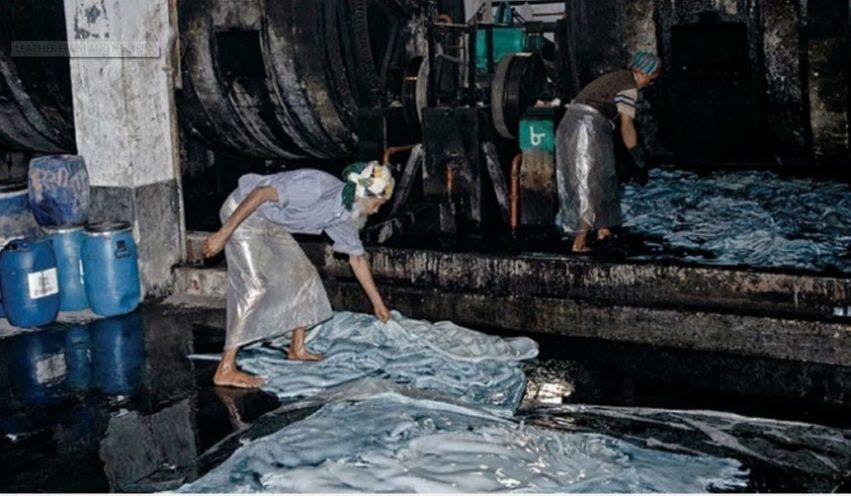Curious about the historic impact of scientific advancement on society? Whether you want to learn about historical salary trends for chemists or are trying to determine when a product first hit the market, the award-winning journalism in C&EN Archives can help you find answers.

Curious about the historic impact of scientific advancement on society? Whether you want to learn about historical salary trends for chemists or are trying to determine when a product first hit the market, the award-winning journalism in C&EN Archives can help you answer all kinds of questions about news in the science sector. It provides more than 90 years of cover-to-cover access to Chemical & Engineering News so that readers can learn more about the most important moments in chemistry and how those moments were captured and perceived over time. Analyzing these trends can help inform readers’ views of how current changes may impact the future. Information on topics as diverse as science, medicine, social studies, marketing, engineering, environmental studies, business, law, and many more can be uncovered among the 500,000 pages of archival materials through the full-text searching capabilities of ACS’s award-winning website.

Historical case studies about a particular substance can provide important instruction for scientists, lawyers, and businesspeople alike. For example, asbestos first appeared in C&EN in 1934 with an article about its use in the manufacture of rubber items.Whether you need a snapshot of a specific date or year to see what was making news and how it affected science or you want to track changes in the chemical industry and movement in public opinion through time, users can find answers in C&EN Archives. Two articles about vaping, for example, are reflective of the sudden rise of e-cigarette usage in society as smoking becomes taboo in more communities and people search for alternatives.[1],[2]
For example, asbestos first appeared in C&EN in 1934 with an article about its use in the manufacture of rubber items.[3] Though the article’s main focus was current manufacturing processes, it also provided a brief history of the use of asbestos as far back the first century. In the 1950s and 1960s, articles in C&EN discussed the way asbestos was placed in the spotlight as an important material at industry conferences such as the British Plastics Exhibition[4] and celebrated new asbestos-fortified materials that could withstand extremely high temperatures.[5],[6]
In the 1970s and 1980s, C&EN tracked changes in public and scientific opinion on safe levels of asbestos exposure[7],[8] and began announcing new innovations to replace asbestos.[9],[10] The 1980s also brought more investigation into lung cancer causation,[11] the restrictions placed on asbestos use,[12],[13],[14] and political interference in the investigation and restriction process.[15],[16] After over a decade of lawsuits and fraud investigations,[17],[18],[19],[20],[21],[22] the denouncement of asbestos continues today.[23],[24],[25]
This is a case study that looks at the business surrounding asbestos, particularly early on, delves into public opinion and health, and finally arrives in politics and law. The information chronicled in C&EN Archives can be used in many fields as an educational tool for students and to provide broader context of the industry for science students and researchers.

Most importantly, studies of the history of technological innovation should incite questions about today’s science. For example, scientists are currently pursuing nanotubes and similar materials for their ability to create strong, flexible, and conductive products. However, they are physically similar to asbestos: long and ultrathin. Should we be using the lessons of the past, often captured in C&EN, to help us avoid costly mistakes in the future? Access to information regarding similar past experiences and situations could provide scientists guidance on possible side effects that may prevent another billion-dollar economic mistake and priceless loss of life.
Visit pubs.acs.org/cen-archives to start browsing issues or e-mail ACSPubsSales@acs.org for assistance in considering access options for your institution.
Note: Beginning in 2017, C&EN Archives changed from being a rolling archive to a static archive, with over 4,100 issues extending through 2015. For issues dated 2016 to the present, please visit C&EN Global Enterprise at cenglobal.acs.org.
[1] Controversy Clouds E-Cigarettes. Chem. Eng. News 2014, 92, 32–33.
[2] Boom in E-Cigarettes Sparks Debate. Chem. Eng. News 2015, 93, 10–13.
[3] Asbestos and Its Use in the Manufacture of Rubber Goods. Ind. Eng. Chem., News Ed., 1934, 12, 97–98.
[4] Closer Liason, Less Secrecy Urged In Industry. Chem. Eng. News 1953, 31, 2776.
[5] New High-Temperature Material. Chem. Eng. News 1958, 36, 58–59, 102.
[6] Nylon, Asbestos Team Up. Chem. Eng. News 1958, 36, 62–67.
[7] Asbestos Health Question Perplexes Experts. Chem. Eng. News 1973, 51, 18–19.
[8] Debate Continues over Safe Asbestos Level. Chem. Eng. News 1978, 56, 6.
[9] Safety Influences New Equipment Designs. Chem. Eng. News 1979, 57, 18.
[10] Alkali Resistance of Slate–Limestone Fibers Probed. Chem. Eng. News 1983, 61, 47.
[11] Asbestos, Smoking Link to Cancer probed. Chem. Eng. News 1981, 59, 21–22.
[12] Asbestos Use Faces Further Restrictions. Chem. Eng. News 1980, 58, 19.
[13] EPA Proposes Ban on Asbestos Use. Chem. Eng. News 1986, 64, 6.
[14] OSHA Reduces Allowed Asbestos Exposure. Chem. Eng. News 1986, 64, 7–8.
[15] Proposed Asbestos Ban: OMP Accused of Illegal Interference. Chem. Eng. News 1985, 63, 6.
[16] Coalition Sues to End Ban on Asbestos Use. Chem. Eng. News 1989, 67, 6.
[17] Asbestos Class Action Suit. Chem. Eng. News 1996, 74, 6–7.
[18]Asbestos Drives Owen Corning Into Bankruptcy. Chem. Eng. News 2000, 78, 8.
[19] Asbestos Snares Two More Firms. Chem. Eng. News 2002, 80, 8.
[20] Pfizer To Pay $835 Million in Asbestos Claims. Chem. Eng. News 2004, 82, 8.
[21] Asbestos Tort Reform. Chem. Eng. News 2005, 83, 30.
[22] Hearings Probe Fraud in Silicosis Lawsuits. Chem. Eng. News 2006, 84, 28–29.
[23] Cancer-causing Asbestos May Trigger Autoimmune Diseases Too. Chem. Eng. News 2016, 94 [online].
[24] The Global Menace of Asbestos. Chem. Eng. News 2016, 94, 28–31.
[25] Attacking Asbestos from All Angles. Chem. Eng. News 2016, 94, 32–34.